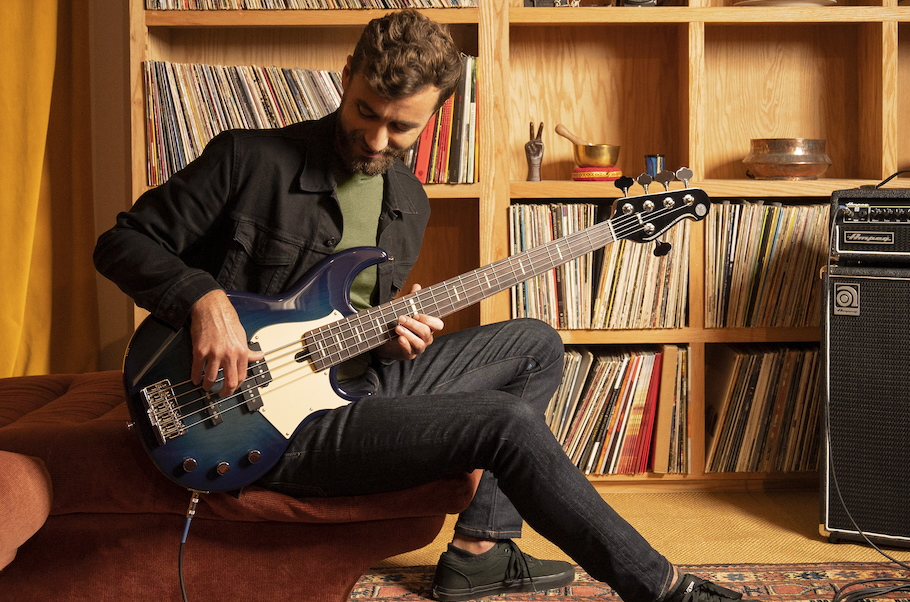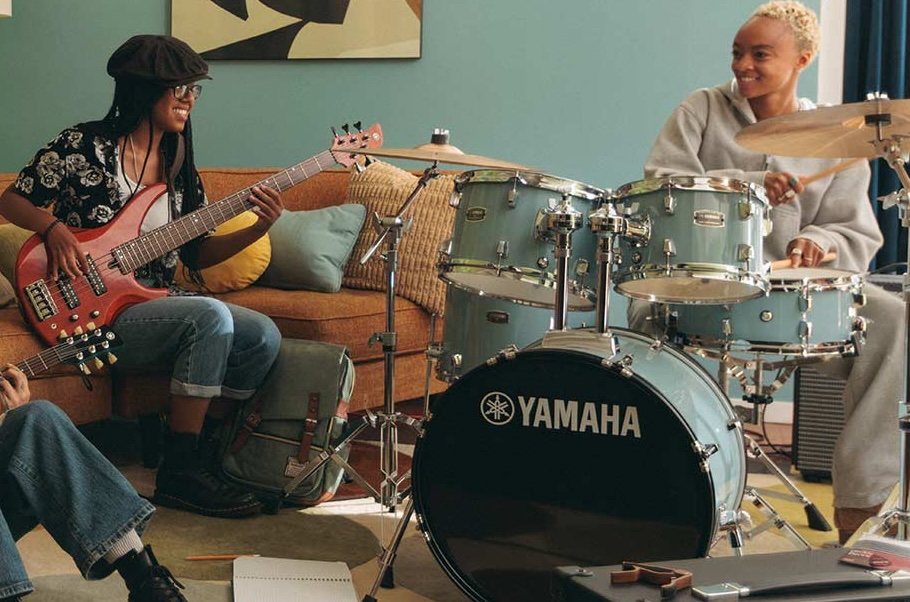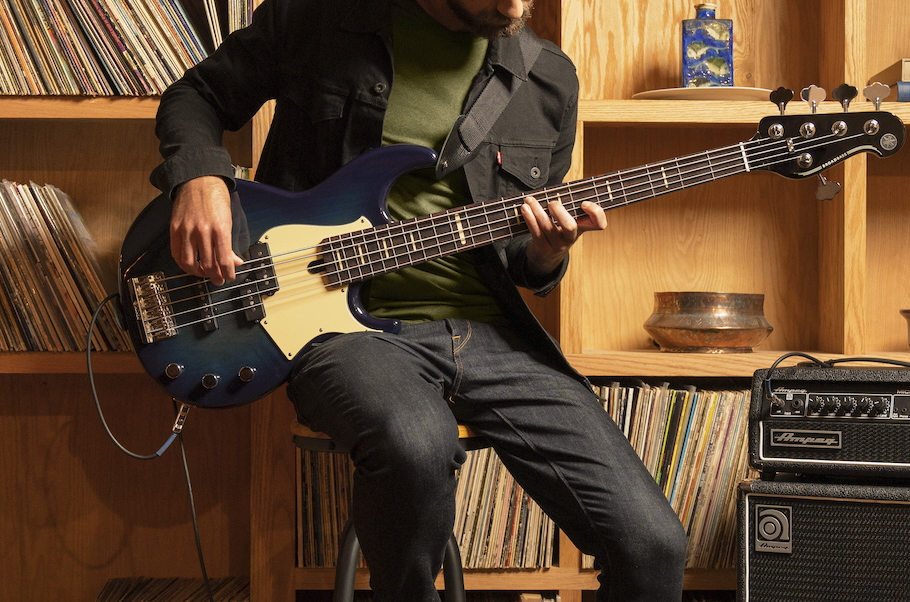A Brief Guide to Bass Guitar Tonewoods
When it comes to the woods in your bass, beauty is so much more than skin deep.
My wife is a remarkable woman, for a variety of reasons. One is that she forgives my chronic late-night infidelities with the harem of bass guitars I’ve accumulated over the decades.
That said, sometimes she will ask plaintively, “Why do you have so many of them?” The answer is simple: I love them all; they all do different things. To be honest, a long parade of basses have marched in and out my door over the years, but the ones with magical tone, responsiveness and striking looks have stayed put, due in part to the characteristics of the various woods used in their construction.
Each wood species has its own unique properties — such as hardness, resonance, responsiveness, weight and grain patterns — that make it an appropriate choice for a particular bass body, neck, fretboard, laminate or decorative veneer. Luthiers make common design decisions based on the interplay of these properties, but there is no “one size fits all.” The seemingly small nuances in the characteristics between woods can make all the difference in the world as to why a particular bass sounds, feels and looks so good in your hands. And once you’ve played a wide variety of basses, you’ll know which combination(s) works best for you.
Let’s take a look at the tonewoods most commonly used in bass guitars.

Alder – Often used in basses due to its comparative light weight, alder has a tight, hard grain pattern that’s best described as unspectacular. However, sonically, alder offers a warm, balanced sound — one that is neither too dark or too bright. In bass guitar bodies, it’s sometimes used on its own (as in Yamaha BB200 Series and BB400 Series basses) or in combination with maple (Yamaha TRBX600 Series, BB700 Series and BB Pro Series).

Ash – There are two types of ash: southern swamp ash and northern hard ash. Generally speaking, both have a more striking grain pattern than alder, and both sound notably brighter too. Swamp ash is relatively soft, which probably accounts for its tamped-down midrange response. Northern hard ash is a dense, heavy wood with snappy mids and an otherwise transparent sound that makes it a popular choice for bass bodies.
Basswood – Soft and light compared to other tonewoods, basswood isn’t known for its color or grain pattern … but that’s probably what makes it such a popular body wood. Sonically, it’s best described as transparent, with bumped mids and toned-down lows and highs, which makes for a high-performing, cost-effective choice, particularly for entry-level basses such as the Yamaha RBX Series.
Bubinga – Highly regarded for its strength and stiffness, bubinga is often used for bass necks, and sometimes for body laminates. However, it’s relatively heavy compared to woods like alder and ash, so it’s not typically used for bass bodies. But when it is, that extra weight makes for some otherworldly sustain.

Ebony – Dark as night and dense as rock, ebony is an exotic darkwood whose inherent characteristics make it a great choice for fretboards, as on the Yamaha TRBJP2 John Patitucci signature bass. With a bright attack similar to that of maple, ebony has a percussive, bell-like attack and resounding sustain. Because it’s heavily protected, however, it tends to be quite expensive.
Koa – A beautiful and extremely dense wood with a flamboyant grain pattern, koa is similar in looks and tonality to mahogany — though perhaps a bit brighter sounding — but much harder to come by, and therefore less popular. Its bold grain and golden tones make it a good choice as a top veneer, but it’s more commonly used in acoustic guitars rather than basses.

Mahogany – A very heavy, finely-grained, medium-hard wood often used in bass bodies due to its attractive grain, but equally suitable for necks due to its strength, warmth, resonance and sustain. It has lots of sonic qualities commonly associated with vintage basses, such as punchy midrange, pronounced lows and smooth, subdued highs. A prime example of mahogany in action can be found in Yamaha TRBX500 Series basses, which boast a solid mahogany body and a mahogany/maple neck.

Maple – There are two types of maple (hard and soft), but hard maple is commonly used in necks due to its strength, density and weight. As found on the Billy Sheehan-designed Yamaha Attitude Limited 3 bass, maple necks — and particularly maple fretboards — are light-colored and bright-sounding, with a propensity for strong midrange and high-end sizzle without sacrificing any lows.
Maple is also a common laminate used in bodies to provide strength and midrange — as, for example, in Yamaha BB Series basses. Well known for its birds-eye, flame and tiger grain variations, maple also makes for an eye-popping veneer, as evidenced on the Yamaha TRBX604FM bass.

Rosewood – A very popular choice for fretboards, and for good reason. Rosewood is extremely hard, has a sexy grain pattern and is renowned for its sonic qualities: warmth, rich overtones, and lots of attack and projection across the entire range of bass notes. Brazilian rosewood, which nearly became extinct due to overuse, is now banned from being exported. Indian and Honduran rosewood are widely considered to be suitable replacements.
Walnut – Loaded with low-end pizzazz, along with consistent mids and brightness, walnut is generally punchier and warmer than maple. Easy on the eyes with a luxurious grain pattern, it’s also easy to lose sight of walnut’s weight — both for the sustain it provides and the upper-body workout it guarantees.
Wenge – Similar in appearance to ebony, wenge is more often used for bass necks, as opposed to bodies. Despite being hard and heavy, it isn’t as bright sounding as maple — it’s lively and punchy, but with thick fundamentals and steady midrange character.
Click here for more information about Yamaha basses.














